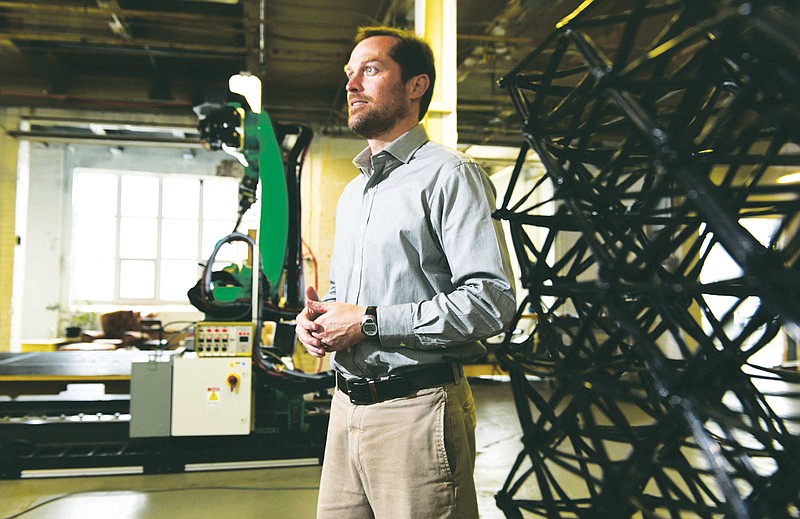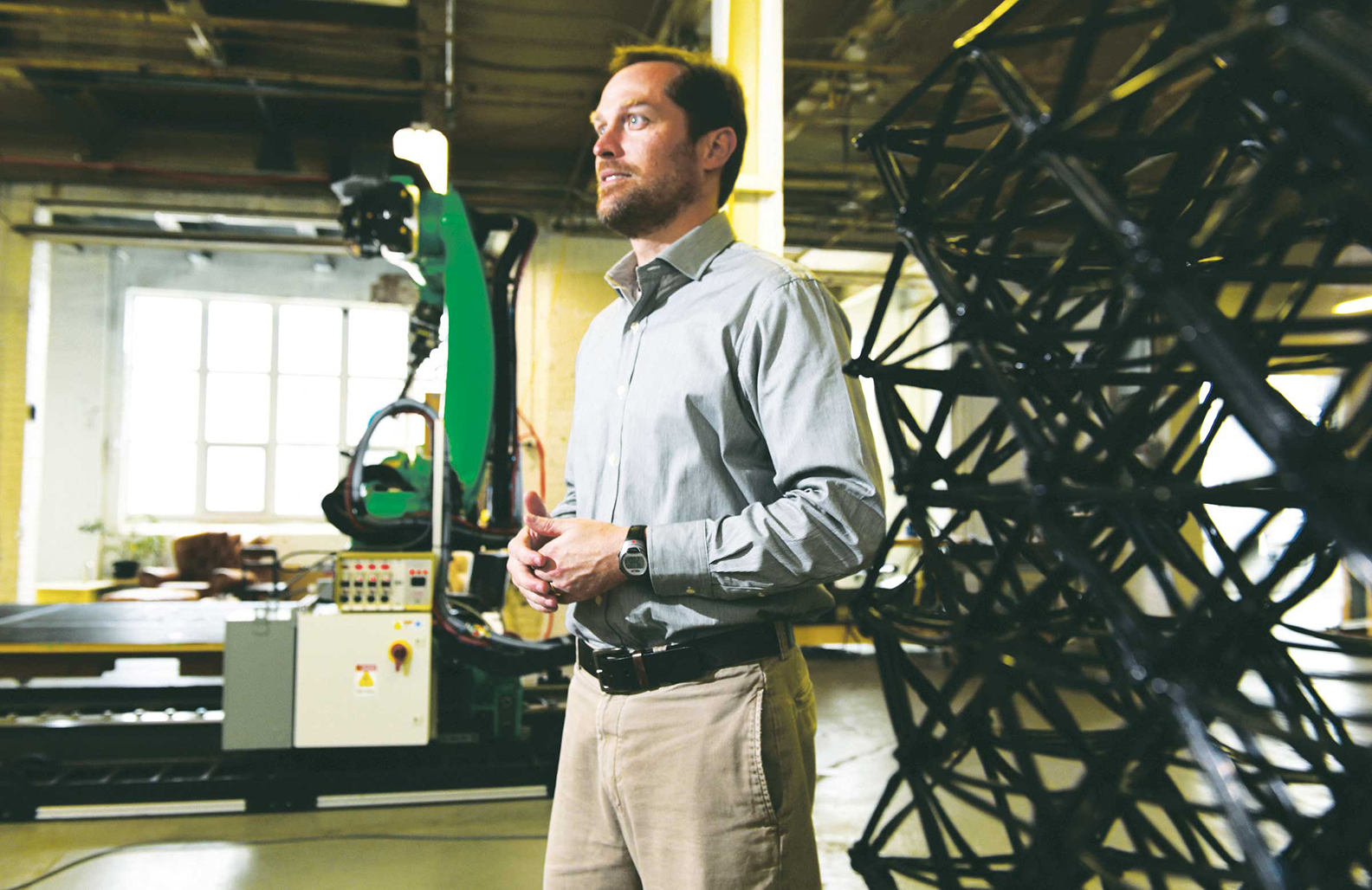Picture a tiny bridge made of interconnected plastic pyramids that weighs a mere 2 ounces.
Now picture a 160-pound man standing on it while it supports his weight.
That real-life experiment helped convince Platt Boyd to quit his high-paying job as a partner at an architectural firm in Montgomery, Alabama, move to Chattanooga, and launch Branch Technology, a startup business built around the world's largest free-form, 3-D printer.
"To leave a good job and go do something crazy was a big deal," says Boyd, a married father of four.
But Boyd is convinced he's on to something big. And if he's right, it could change the shape of ordinary, everyday architecture - literally.
Instead of boxy buildings "stick built" from 2-by-4s and sheets of plywood, Boyd believes his technology could let more architects design free-form structures with curves, rounded corners and swooping roofs - a style synonymous with architect Frank Gehry.
"The advantage is not the straight wall," says Boyd; stick-built wins there. "The advantage of a technology like this is you can do crazy shapes."
He envisions a day when architects will send their plans to Branch Technology, which would use 3-D printing to build lightweight frames of interconnected plastic and carbon fiber pyramids. The frames would be assembled at the building site and then filled with foam or concrete and covered with stucco or some other finish to make walls and other architectural features.
While Branch Technology is still in the startup stage, a real-life example of its work - a topographical sculpture of the Tennessee River Gorge - hangs in the fifth floor of the Edney Building on 11th and Market streets in the heart of Chattanooga's new Innovation District.
Director George Lucas recently won approval to build a "Star Wars" museum in Chicago on the Lake Michigan shorefront, and Boyd joked, "We could do a great Yoda head for the Star Wars building."
Branch Technology also has announced a contest in which it will give a $10,000 prize to the person who comes up with the best design for a house to be built with 3-D printing.
"You design. Branch builds. The world sees what is possible!" says the company's website, which lets would-be contestants sign up to learn more details about the upcoming contest.
'Cellular fabrication'
Boyd, who's fascinated by "how things are made in the natural world at the cellular level," used his spare time in Montgomery to experiment with shapes made of interconnected plastic pyramids.
The first prototype only weighed half an ounce, yet it could support an 18-pound stack of books.
He kept tinkering with his tiny structures and refining them until he built the 2-ounce span that would support his 160-pound body weight.
The experimenting continues in a 5,000-square-foot shop at the Business Development Center, a landmark Art Deco building on busy Cherokee Boulevard in North Chattanooga.
Like a baker decorating a cake, a massive, 7,000-pound, German-made robot arm in the shop delicately and slowly extrudes a licorice-shaped strand of plastic and carbon fiber to build the interconnected pyramids that form the structures - a process that Branch Technology calls "cellular fabrication."
The robot arm was "off the shelf," says Boyd, who cashed out his 401K retirement account to help pay for it. What's unique about the process, which is patent pending, is the tip that dispenses the plastic to make shapes using a complex algorithm.
"Normal 3-D printing is a layer-by-layer build-up," Boyd says. "What we're doing is free form."
He thinks the technology is unique.
"We think that we're the only ones that have anything like this."
The robot arm can move on a rail, and it could build a structure 25 feet wide by 58 feet long, which makes it the "largest free-form 3-D printer in the world," Boyd says.
Branch Technology has attracted worldwide attention, including from Fortune magazine and the website Gizmodo. Boyd says his startup is close to raising its goal of $1.5 million in capital. He said about 50 different people have contacted Branch Technology to participate in projects around the world.
The GigTank, a 12-week "accelerator" program to help startup business get going run by the Company Lab, is what drew Boyd to Chattanooga in 2014.
He plans to stay in Chattanooga.
"It really is a beautiful and special place," Boyd says.

